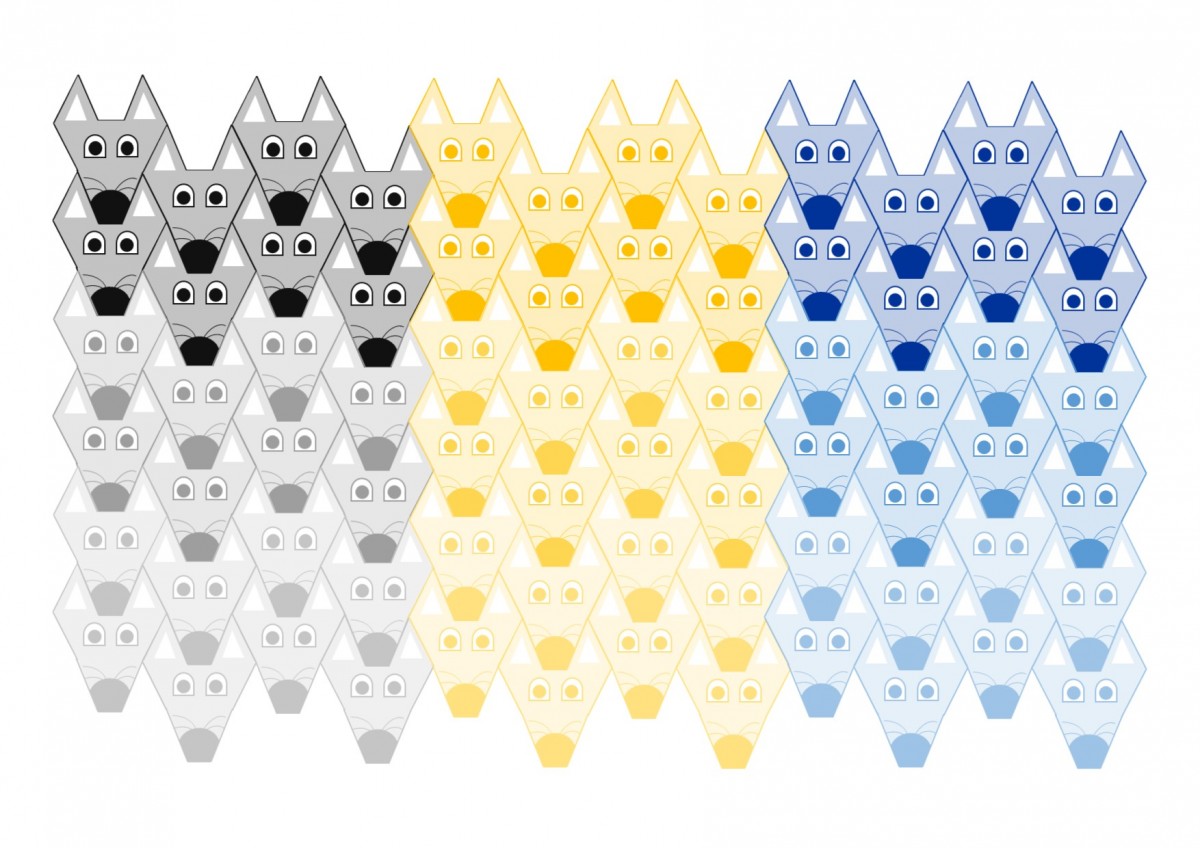As part of our task from our second lecture on this course, we had to explore the idea of shape and tessellation or look into creating an Escher based piece of art. I decided I would attempt the Escher based task, where you start with a shape that tessellates and you take bits/sections and move them to a different side of the shape to create an animal which then tessellates itself. I will show you step by step how I went about creating my final piece.
Firstly I chose to base my design around the hexagon.  Then what you do is you begin to, in a sense, ‘nibble’ away sections of the hexagon that will be used to move later on to create the animal. In the picture below we can see the hexagon being cut up into five different sections, four of which are blue. The reason why they are blue is to show that these are the pieces that are being removed from the hexagon.
Then what you do is you begin to, in a sense, ‘nibble’ away sections of the hexagon that will be used to move later on to create the animal. In the picture below we can see the hexagon being cut up into five different sections, four of which are blue. The reason why they are blue is to show that these are the pieces that are being removed from the hexagon. After removing the four pieces, we are left with an irregular hexagon. That looks a like the picture number 1. I then started to move the four removed pieces around to see where they would fit and what animal they would make, until I decided on the set up of picture number 2. Showing the finalised joining of the shapes in number 3.
After removing the four pieces, we are left with an irregular hexagon. That looks a like the picture number 1. I then started to move the four removed pieces around to see where they would fit and what animal they would make, until I decided on the set up of picture number 2. Showing the finalised joining of the shapes in number 3. Below you can see the new shape against the original hexagon (dashed line hexagon in red) that I started with.
Below you can see the new shape against the original hexagon (dashed line hexagon in red) that I started with. Here we can see the original shape and we can identify the areas that have been moved around. As a result of using a hexagon this means that our new shape will tessellate to create a very interesting picture but first we need to add the details of what animal this is.
Here we can see the original shape and we can identify the areas that have been moved around. As a result of using a hexagon this means that our new shape will tessellate to create a very interesting picture but first we need to add the details of what animal this is. I decided to go for the design of a fox’s face and then tessellated this to create the final tessellation design below.
I decided to go for the design of a fox’s face and then tessellated this to create the final tessellation design below.
We can then go onto to change the colours of the foxes to make it relate more to Escher’s design. But the reason why this foxes face tessellates is because of the starting shape, a hexagon, has 360° when the shapes are joined together. This is shown in the picture below with the hexagons.
Below you can now see my finished design of the tessellation of a hexagon inspired by Escher.
I do feel this would be quite possible to take into the primary classroom and these steps are quite simple. It can be completed with real materials or, as I have done, with the computer and this will help enhance the children’s computing skills.

